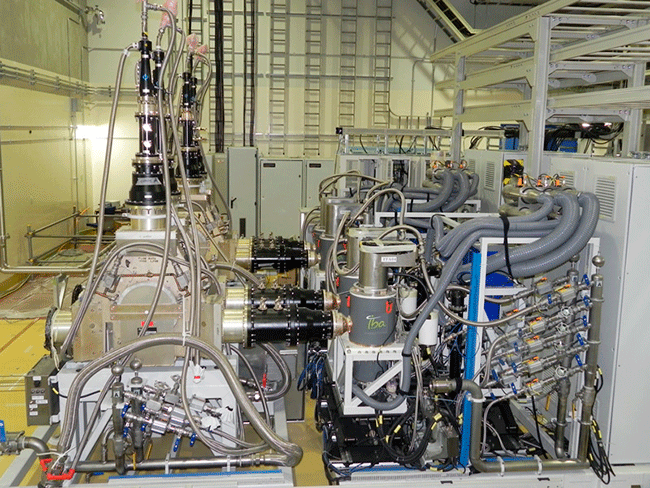
Under the umbrella Strategic Program of National Business Research Consortia (Programa Estratégico de Consorcios de Investigación Empresarial Nacional: CIEN) of the Industrial Technology Development Center (Centro para el Desarrollo Tecnológico Industrial: CDTI), the technology multinational GMV is participating in a consortium with other Spanish companies in the project called Accelerators and Associated Technologies for Big Science Facilities (Aceleradores y Tecnologías Asociadas para Grandes Instalaciones Científicas: ACTECA). The purpose of the project is to build up a set of technologies to boost Spanish industry’s participation in Big Science Facilities, doing so by developing and building critical, high-added-value components and systems.
The overriding industrial aim of the 7.5-million-euro ACTECA project is to develop the necessary technology to drive Spanish participation in the construction and operation of critical elements of DONES (“DEMO-Oriented Neutron Source”). DONES, currently under development as the first phase of the IFMIF (“International Fusion Materials Irradiation Facility”) project, aims to produce neutron flows of similar characteristics to those expected in a nuclear fusion plant, for testing and qualification of the materials to be used in these plants.
Photo: CIEMAT
Particle accelerators are devices using electromagnetic fields and resonant cavities to accelerate and guide charged particles at high speeds with various purposes. Their number has soared since their original conception in the first quarter of the twentieth century. There are now estimated to be about 30,000 accelerators in operation around the world; about 85% of these are used for radiotherapy and irradiation applications or for ion implantation in the semiconductor industry. The accelerators targeted by ACTECA are those used for R&D purposes and high-energy physics applications, representing about 1% of the aforementioned total.
In particular, within the ACTECA project, GMV is responsible for developing the virtual plant model, doing so in close collaboration with the Technological-, Environmental- and Energy-Research Center (Centro de Investigaciones Energéticas, Medioambientales y Tecnológicas: CIEMAT), a public body for research into energy and environmental matters.
GMV’s participation in this project chimes in with its ongoing commitment to R&D and advanced simulation applications. Moreover, its participation in the field of Big Science Facilities now dates back to the eighties with its first earth-observation, astronomy and space-exploration projects. GMV has by now built up a wealth of experience and expertise in control and instrumentation engineering as well as simulation, control centers, data processing and cybersecurity; it is currently contributing towards such Big Science Facilities as ITER (International Thermonuclear Experiment Reactor), IFMIF and ESS (European Spallation Source), either directly or as subcontractor, and in close collaboration with the Polytechnic University of Madrid (Universidad Politécnica de Madrid) through the Applied Acoustics and Instrumentation Research Group (Grupo de Investigación en Instrumentación y Acústica Aplicada) and the Particle Beam Laboratory (IZPILab) of the Basque Country University (Universidad del País Vasco /Euskal Herriko Unibertsitatea: UPV/EHU).




